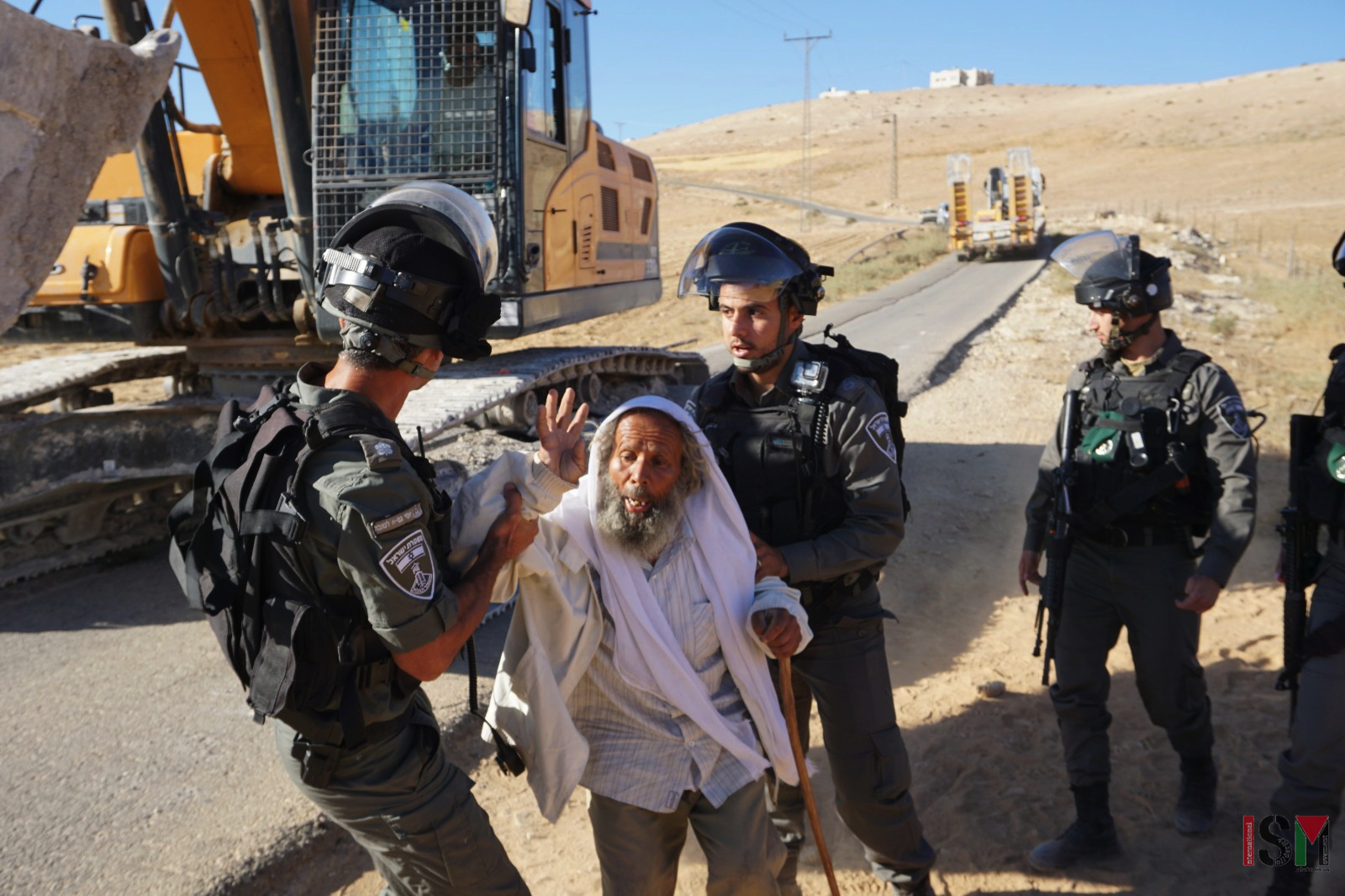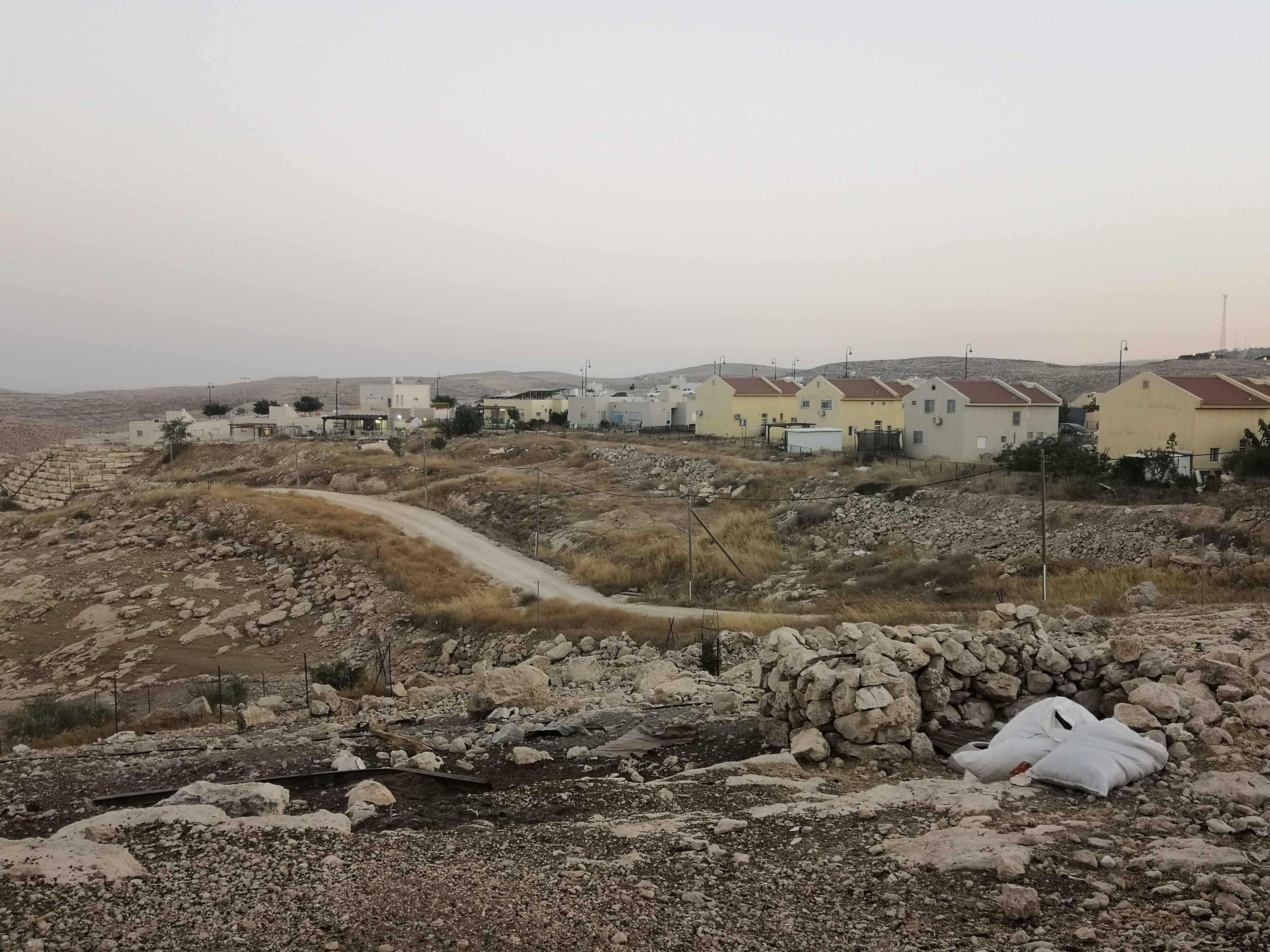Tag: Um al Kheir
-
Livelihoods destroyed in two days of demolitions in South Hebron Hills
July 4 | International Solidarity Movement | South Hebron Hills, occupied Palestine The South Hebron Hills have faced two consecutive days of demolitions starting early yesterday morning, with bulldozers destroying water wells and uprooting over 500 trees in two villages. An elderly Palestinian activist from Um al-Khair was also hospitalised yesterday after being violently…
-
Bedouin village of Um al-Kheir fights against new demolition threats
June 26 | International Solidarity Movement | Umm al-Kheir, south Hebron Hills, occupied Palestine The Bedouin village of Um al-Kheir in the South Hebron Hills have launched a new bid to save their homes from demolition. On Monday, activists from the village submitted a new master plan to the Israeli Civil Administration which, if accepted,…
-
A Tale of Zero Cities
11th November 2017 | International Solidarity Movement, al-Khalil team | Um al-Khair, Occupied Palestine Last month in northern Palestine brought stories of Israeli settlers from the illegal Yitzhar settlement that, however horrifying, all suffered an important shortcoming: the scope of the stories lent to individual scapegoats, and in doing so provided a vivid, but ultimately penny-deep…



